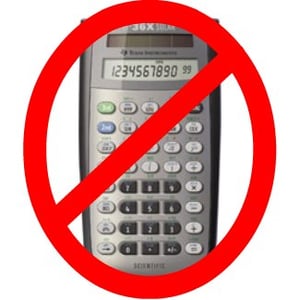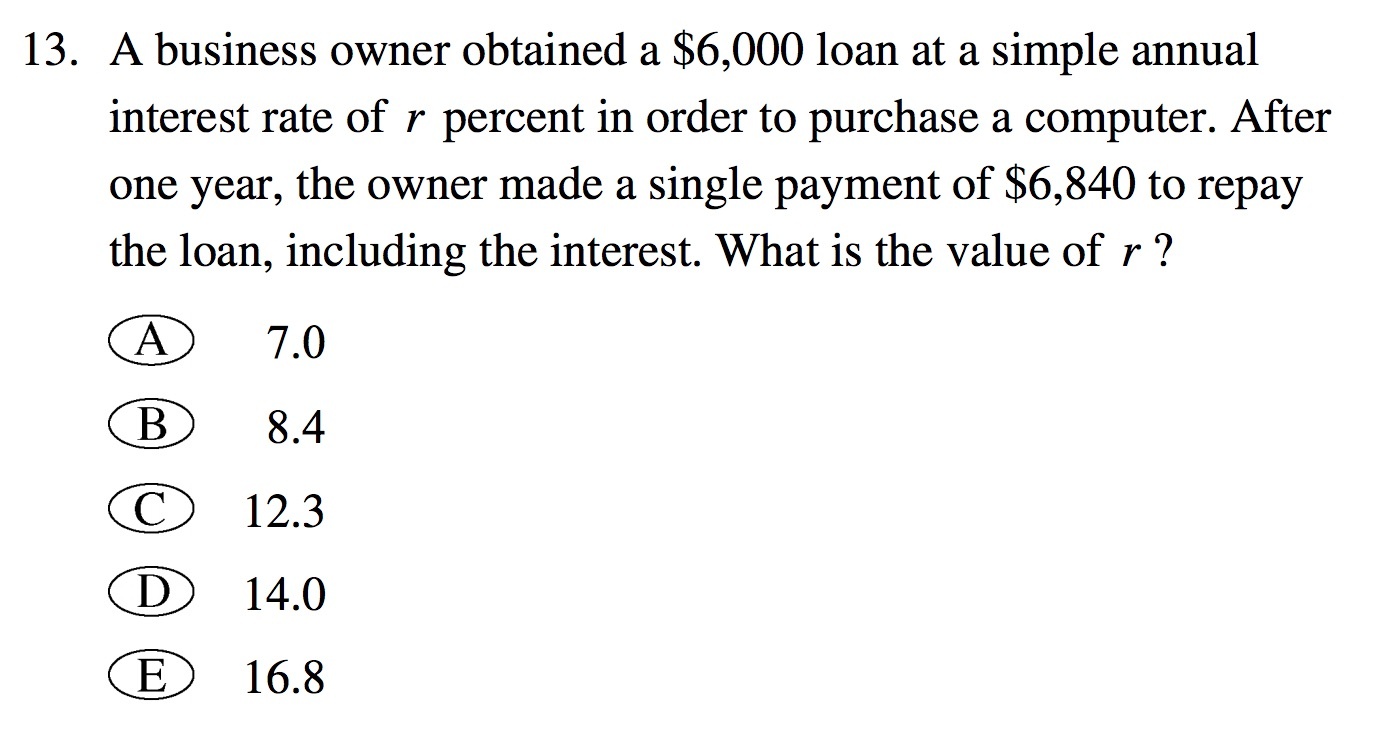Do you remember studying a ton of vocabulary for your SAT back in high school? Well, you probably took SAT right before the ETS reconfigured the whole thing and removed...
How to Win Time by Losing the Calculator on the GRE
 The GRE may not be a fun test, but it’s also not a cruel test. Unlike other standardized exams you need to take to get into grad school, the GRE lets you use a calculator on the Quantitative section. In fact, the GRE actually provides you with a calculator.
The GRE may not be a fun test, but it’s also not a cruel test. Unlike other standardized exams you need to take to get into grad school, the GRE lets you use a calculator on the Quantitative section. In fact, the GRE actually provides you with a calculator.
This is great news for every test-taker with a fatal allergy to mental math (I’m looking at you, Humanities people). The people who write the GRE know that there is a large segment of people taking this test who use the calculator app on their phones every time they have to split the pizza bill up five ways.
But that calculator is on-screen, which means you have to do a lot of clicking any time you want to make a calculation. It’s actually incredibly annoying to use and, furthermore, can eat up a lot of time.
In reality, while the GRE provides you with a calculator, the test is really designed to benefit people who know how to avoid using one.
Why Should I Avoid the Calculator If It's Right There?
Like I mentioned earlier, using that calculator takes time. On top of taking the time to punch numbers into a poorly designed calculator interface, you have to jot down results to keep track of relevant values.
Going back and forth between these steps as you solve a problem might only add 20 extra seconds to the problem you’re working on. But if you take that extra 20 seconds on 12 problems, then you’ve wasted four minutes of your allotted time on the Quantitative section just crunching numbers.
Remember, the game with the GRE is all about getting as many points as possible. Sure, that means you should make sure you’re answering as many questions correctly as you can. But you also need to make sure you have time to see all the questions on the test and give them a fair shot. Every second of exam time is precious, and any that you can buy yourself will only help you devote more time to picking up every single point you possibly can.
So How Do I Cut Back on My Calculator Use?
There are a few surefire ways to cut back on your calculator use.
Memorize the simple stuff. You should know your multiplication tables up to a factor of 12 as well as the squares of 1 through 20. Know the Pythagorean triples, there aren’t many. Make sure you’re at least somewhat familiar with all the prime numbers under 100.
Develop useful devices for quick mental math.
- Division rules are really useful for figuring out, roughly, what you’ll get when you divide two numbers.
- Use simple percents to figure out more complex ones. For instance, you can figure out 40% of 70 easily. 10% of 70 is 7, so 40% is 4 * 7, or 28.
Estimate, estimate, estimate. Don’t forget that this is a process of elimination test. You can get far on this exam by doing some rough calculations in your head and eliminating any answer choices that you know for a fact won’t work. Let’s look at an example to see some estimation in action:

While you could easily set up some algebra and solve for r, you can do some really quick calculations in your head to eliminate answer choices.
First off, we know that we’re trying to figure out what percent of $6,000 equals $840, since that’s the difference between the original amount of money and the new amount including interest.
Well, 10% of $6,000 is $600, so 10% is too low. That means we can eliminate answer choices A and B since those are smaller.
What about 15%? Well, that’s 10% of $6,000 plus 5% of $6,000, which is $600 plus $300, or $900. That’s too big, so we can eliminate answer choice E also, since that’s higher than 15%.
Between B and C, which seems better? Well, $840 isn’t much less than $900, which means we probably want the answer closest to 15%. That’s answer choice D, which is indeed the correct one.
A top-notch GRE strategy absolutely includes methods like these for avoiding calculator work.
About the Author
Mike S. is one of our most experienced test prep tutors. For more information on our GRE prep packages, click here.
